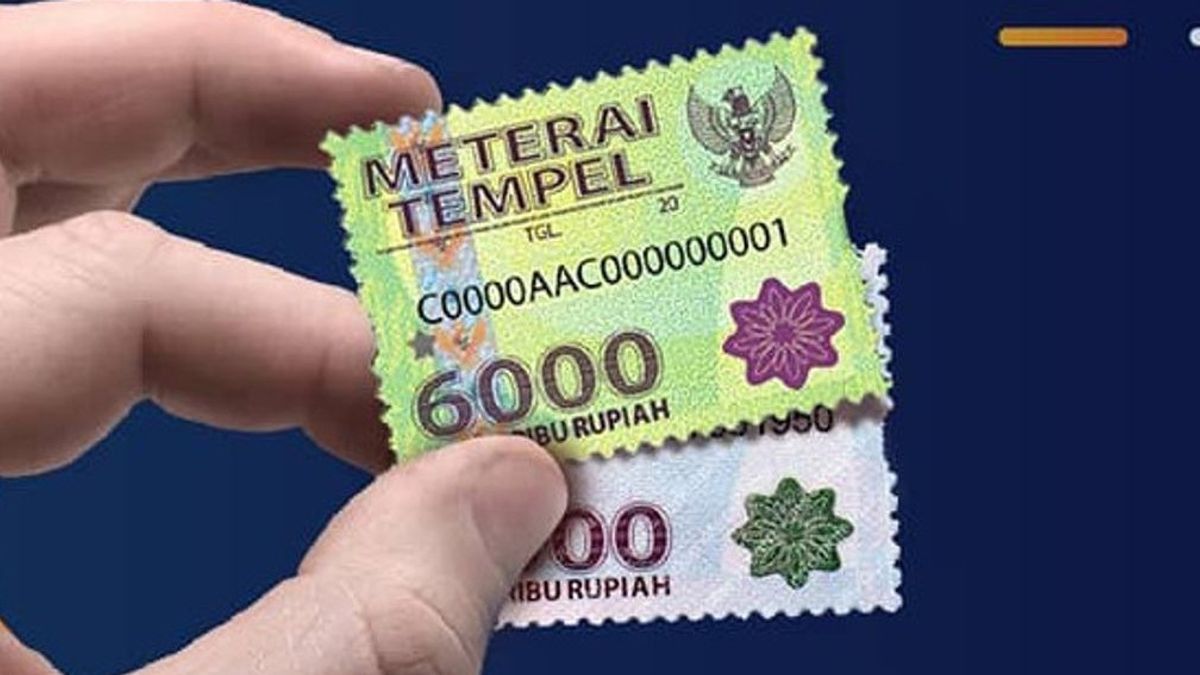YOGYAKARTA - Materai is a tax document used to provide legal force to letters or agreements, especially for important documents such as contracts, agreement certificates, power of attorney, or statement letters. In Indonesia, stampai is still widely used. Want to know how to sign on a valid stamp?
However, the finalization of the stamps is not only affixed but also requires the right signature to be considered valid. To ensure that the documents used have legal force, this article will discuss how to put the right signature on the stamps attached.
Understanding The Functions And Use Of Tempel Materai
Stamp monoai is a tax payment fact tool for documents that are worth more than a certain amount. For stamp duty, namely to provide legality and legal force in written documents, be it a contract agreement, an official statement, or an agreement deed.
The use of stamp stamps cannot be arbitrary. Not only attaching it to the right place on the document, the signature must also be done legally and according to the provisions. If the method of signing or restoring the stampai is wrong, then the document can be legally suspected.
Types Of Documents That Need Tempel Materai
Saat sebelum manggasa metode tanda tandas, penting untuk mengidentifikasi dokumen-dokumen apa saja yang umumnya membutuhkan pembuahan materai. Beberapa contoh dokumen yang biasanya membutuhkan materai stickad di antaranya:
Make sure that the documents that will be given are in accordance with the regulations requiring the restoration of stamps. Each document that has a transaction value or certain agreement is above the official limit, generally requires a stamp duty so that it is considered valid.
The following are steps that must be followed to ensure that the signature on the stamp stamp is carried out correctly and legally.
1. Prepare Documents
When before attaching a stamprai, make sure the document is ready. Check the contents of the document again and make sure there are no misprinting or formats that are not suitable. Before signing on stamps, you should make sure all parties have read and understand the contents of the document.
2. Paste Materai in the Right Place
The first step is to attach a stamp in the right place. Generally, stampai is pasted at the bottom of the document, close to the signature column. Materai should not be pasted in any place on the document, because the stampai position influences whether or not the document is valid.
Materai must be pasted neatly, not damaged, and make sure all parts of the stampai are properly attached to the paper.
3. Ensure Partial Signatures Regarding Materai
After the stamp is pasted, the next step is to put a signature on it. This is a very meaningful part because the mandatory signature is part of the stampai. In this case, the signature must be transverse or pass through some of the stampai surface and some of the paper outside the stamp duty.
Signatures that only hit paper without touching stampai are considered invalid. Likewise, if the signature is only about stamping without passing through the paper, the document will not have legal legal force.
4. Don't Damage Materai While Signing
When putting the signature on the stamp, make sure not to damage the stamp. Don't use a pen or stationery that is too sharp so that it can be annoying or torn. If the stamp is damaged at the time of signing, the document can be considered invalid and must be exchanged for a new stamp.
5. Use Wet Signature
In documents that use stampage, make sure the signatures that are signed are wet signatures, are signatures that are tried directly with a pen. Digital signatures or signatures are not valid for use on stamp stamps. Use a pen with dark or blue ink, and stay away from using other colors for formality reasons.
Talking about stamps, of course, you must also know about the Difference in Signatures and Paraf which Often Confuses you.
So after getting to know how to sign on a legitimate stamp, see other interesting news on VOI.ID, it's time to revolutionize news!
The English, Chinese, Japanese, Arabic, and French versions are automatically generated by the AI. So there may still be inaccuracies in translating, please always see Indonesian as our main language. (system supported by DigitalSiber.id)












